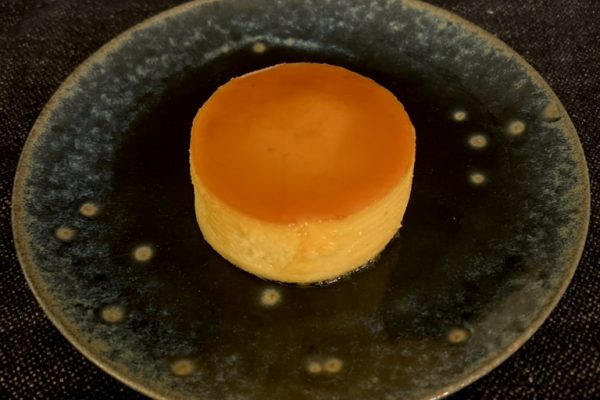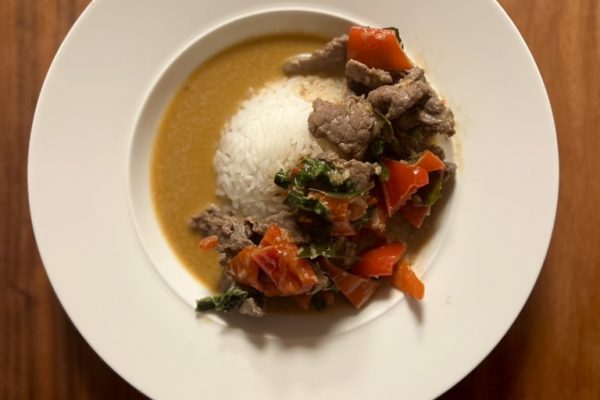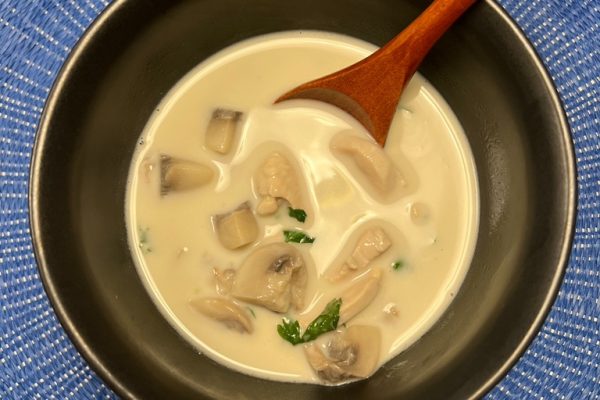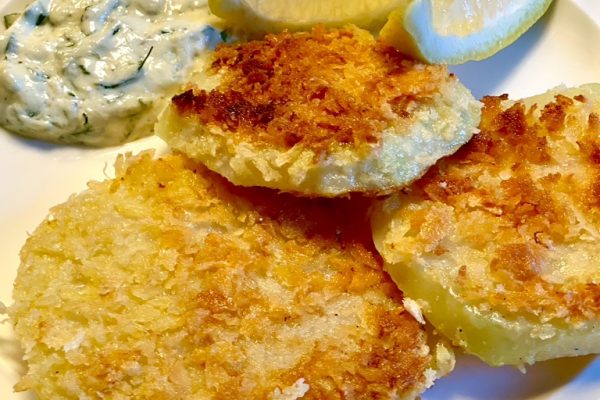This is a complex recipe and you can learn a lot from it about the art of preparing sauces. However, the individual steps give you enough time to prepare it with calm and concentration. Follow this description exactly and you will succeed.
We braise our duck for a long time at a relatively low temperature so that the meat is tender and loses a lot of the fat that a duck is not particularly stingy with. It is only grilled until crispy at the end and, in our opinion, this technique gives you the perfect result, finer and more flavoursome than if you just roast the duck in the oven.
With us, a free-range duck weighs between 2.5 and 3 kg, which is not only very filling for four people, but is also enough for a delicious leftover meal the following day. The weight has an effect on the cooking time, so make sure you weigh the duck before you process it.
We could write a separate article about gutting and carving a duck, but that would go beyond the scope of this article. We assume that you can buy an appropriately prepared duck.
Firstly, the duck must be washed thoroughly inside and out and, as always with poultry, a high level of hygiene is required. All work surfaces, chopping boards and tools must be cleaned very thoroughly with hot water and must not be used for any other step of the preparation beforehand.
Separate the small wings from the washed and dried duck. To do this, spread the wing, cut through the skin around the bone with a long, thin knife and then work your way to the joint with the tip of the knife, which can be easily cut through.
We also mix roughly diced onions without skin, apple with skin, salt, pepper and dried marjoram to make a filling.

Now we preheat the oven to 140 degrees, convection would be pointless here.
Then we stuff the belly of the duck with the filling, which is best done with a tablespoon. The skin of the duck is seasoned all over with salt and pepper from the mill and rubbed in. Now the legs are tied tightly together at the ends.

In a large casserole with very little neutral oil, the roughly diced onion, apple and carrot are sautéed over a medium-high heat for a few minutes until they start to become fragrant. These ingredients should not take on colour.

We add the wing bones, then place the duck breast side up on top of the vegetables and pour in chicken stock. The casserole is covered with a lid and the duck is braised for at least 2 hours. The time depends on the weight of the duck. 2.5 kg – 2 hours or a little longer. 3 kg – up to 3 hours.

During this time, we first peel and roughly dice onion, carrot and celeriac and roast them on a medium-high heat for up to 10 minutes, a little colour will do no harm here.

Now we need another saucepan, it can be a smaller one. Again on a medium-high heat, we sprinkle icing sugar on the bottom and allow it to melt and then caramelise until light brown.

As soon as the icing sugar takes on colour, tomato puree is added, stirred and briefly roasted.

This base is deglazed with a little port wine, which quickly evaporates. This is followed by red wine to create a reddish-brown syrup, stirring constantly. That’s it! Switch off the heat and set aside. If you don’t have port wine: You can also use just red wine, adding a small amount at a time, boiling it down and so on.

When the alarm clock you set goes off, take the casserole out of the oven and check on your duck. The meat should be soft to the touch while the skin remains light in colour. If the skin should have cracked, especially on the legs, the duck is definitely cooked enough. Don’t worry: 15 minutes more or less aren’t crucial at this stage.
Now take the duck out of the casserole. The best way to do this is to stick the handle of a cooking tool such as a wooden spoon or ladle into the belly and then lift it out. Large kitchen tongs are also helpful. Place the duck on a baking tray and cover with aluminium foil to prevent it from drying out. It can now rest in the oven at 70 degrees until the sauce is ready.

An intense stock remains in the casserole, with plenty of duck fat floating on top. Remove this from the surface with a ladle. It is better to remove more fat and lose a little stock than the other way round.

This stock is poured through a sieve and the vegetable remains go into the compost
The red wine syrup, roasted vegetables and stock are now combined in a saucepan. To this we add juniper berries, bay leaf, the zest and juice of an orange, a small piece of peeled ginger and a peeled clove of garlic.

Now we bring it all to the boil to extract the last of the flavour and reduce the sauce. To concentrate the sauce, do not put a lid on. This also ensures a great scent in your kitchen.
You now have about half an hour in which to carve the duck.
Take the duck out of the oven and place it on a chopping board. Use a large knife to remove the legs and breasts. You will find out exactly how to do this here.
The legs and breasts are left on the baking tray, skin side up. Pour a little of your sauce on top, place the tray in the oven at a medium height and switch the grill to full power. If you don’t have a grill function, preheat the oven to 200 degrees Celsius for top heat only and then put the duck in, but the grill gives us a better result.
While the duck is getting crispy, we finalise the sauce. Once again, we pass everything through a fine sieve and bring the liquid to the boil once more. In a glass, we mix a little starch with about twice the amount of cold water until smooth and whisk it into the boiling sauce to thicken it immediately. If the sauce still seems too runny, repeat this process.

Using a hand blender (or alternatively a whisk), we mix a little cold butter into this sauce. It must be cold, otherwise this step will not work. As well as adding flavour, this also helps it bind further and gives it a great shine.
Always keep an eye on the duck, the braised skin browns very quickly. When it is golden brown, take it out of the oven and you are ready to serve.

In our home we serve it with red cabbage and pretzel dumplings.
Enoy.
And may the taste be with you.
Ingredients (for 4 very hungry people):
Duck with stuffing:
1 free-range duck, weighing approx. 2.5 – 3 kg
1 apple
1 medium-sized onion
3 tsp dried marjoram
Salt and pepper from the mill
Stock for braising:
1 tbsp neutral oil
2 medium onions
1 large carrot
1 apple
1 litre poultry stock
Roasted vegetables for the sauce:
1 tbsp neutral oil
1 medium onion
1 medium-sized carrot
150 g celeriac
Sauce:
3 tsp icing sugar
1 tbsp tomato paste
4 tbsp port wine
200 ml red wine
10 juniper berries
2 bay leaves
Juice and zest of 1 orange
2 cm ginger
1 clove of garlic
1 – 2 tsp starch
30 g butter




